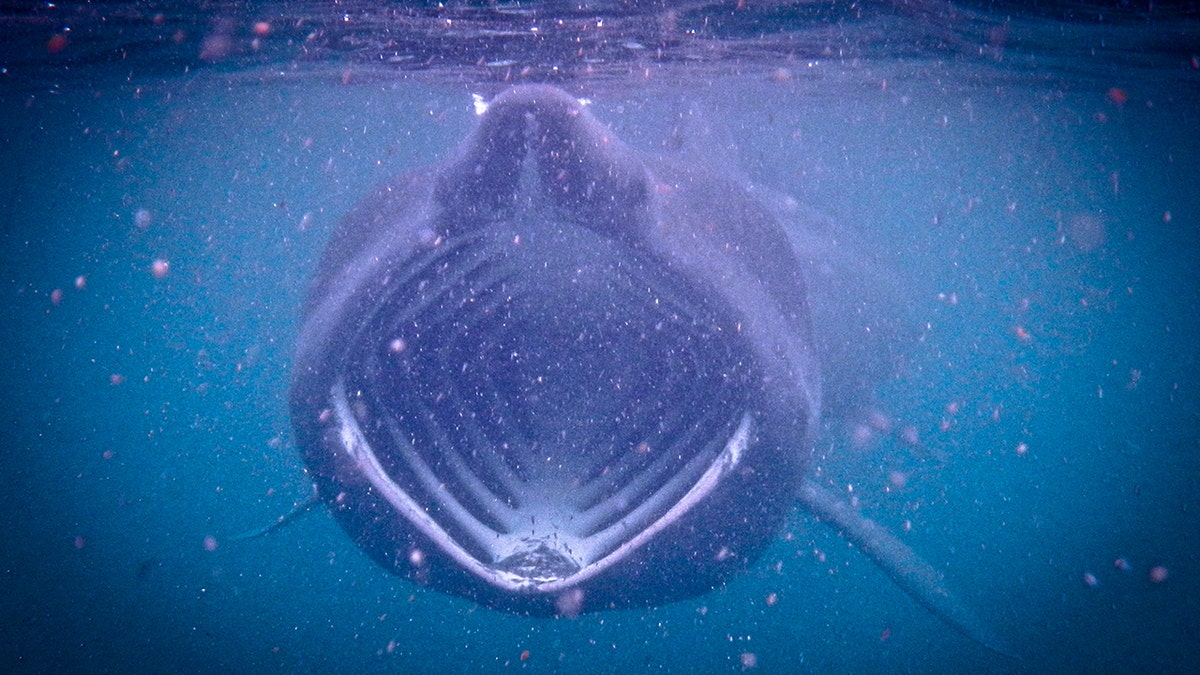
A basking shark is seen off the west coast of Scotland. (iStock)
A basking shark’s enormous silhouette, rarely seen in oceans worldwide, is a major draw for scientists who are mapping its often mysterious migrations.
The world’s second largest fish, growing to more than 35 feet, the basking shark or Cetorhinus maximus, is hunted voraciously for its massive fin.
Global populations of basking shark dropped during the 20th century and the species has struggled to recover because of slow reproduction rates.
The zooplankton-eating sharks do not hibernate and are spotted more often during summer months; in the winter, they tend to move to deeper depths — even down to 3,000 feet below the ocean’s surface.
“It's a shark that remains very mysterious,” Alexandra Rohr of the research group APECS, which is based in France and dedicated to the study of sharks, skates and rays, told Channel News Asia.
Despite their size and menacing appearance, basking sharks are not aggressive and are harmless to humans.

Basking sharks are increasing endangered. (iStock)
DAYS AFTER SHARK ATTACK, CAPE COD TOWN CLOSES BEACH DUE TO 'CONTINUED SHARK ACTIVITY'
APECS uses new tracking technology to monitor the sharks’ migratory range, along with crowd-sourced information from divers, sailors and other members of the public.
According to Channel News Asia, Alain Quemere sighted a basking shark during a fishing trip in the Glenan archipelago off the south coast of Brittany in France and reported details to APECS, which allowed a research team to find the shark and fit it with a satellite tracker.
“I just saw the tip of his fin,” said Quemere, still enraptured by the memory of his five-hour encounter. “One moment it grazed the front of the boat, which made me laugh because my boat is barely five and a half meters and the shark was eight.”
The organization tagged four sharks so far this year.
“You have the impression of seeing a wise old grandfather, it is beautiful,” said Frederic Bassemayousse, a diver and photographer who has spotted the sharks three times.
The International Union for the Conservation of Nature now lists it as “vulnerable” across the world and “endangered” in the North Pacific and Northeast Atlantic.
In a 2013 study, scientists estimated that humans kill roughly 100 million sharks per year.